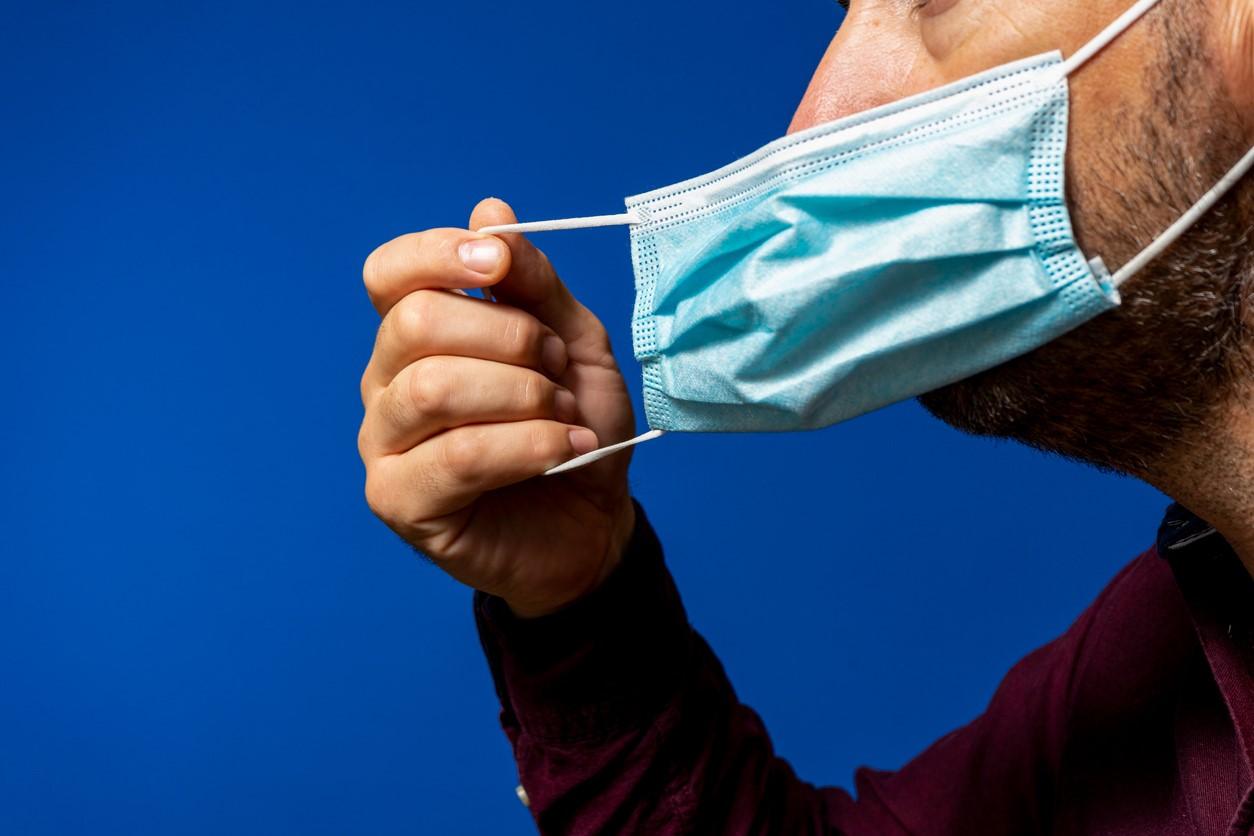As expected and amid a steadily declining Omicron surge, the Centers for Disease Control and Prevention (CDC) today updated its indoor masking guidance, which would ease indoor use for most parts of the country, according to new baseline measures.
The CDC urges states and cities to still look at COVID-19 caseloads when considering masking. But it adds two new metrics for assessing whether to trigger the measure: hospitalization levels and hospital capacity.
Most states have already dropped their mask mandates, reflecting a transition to voluntary use in people who want to lower their risk of spreading or contracting the virus. Hawaii as the only state with mandates still in place.
The move comes at the tail of a downslope of the nation's worst COVID-19 surge, fueled by the much more transmissible Omicron variant.
Three-tiered guidance focuses on severity
At a briefing today, CDC Director Rochelle Walensky, MD, MPH, said the updated guidance comes at a time when the risk is getting lower because of widespread immunity and added that the CDC has been considering shifting to the metric system for some time.
When asked about potential political pressure from governors who have already phased out their mask mandates, Walensky said the guidance intersects with policies that are winding down.
Greta Massetti, PhD, MPH, with the CDC's COVID-19 incident management team, said the guidance comes with a regularly updated map of the country that reflects the metric status, with a three-tiered recommendation, ranging from low (vaccination and testing when sick), to medium (additional precautions for high-risk people), to high (everyone should wear a high-quality mask indoors).
More than half of counties are currently in the low and medium ranges, down from one-third a week ago.
CDC officials said their recommendation for schools are the same as for communities, signaling the end of a universal masking recommendation that the CDC has had in place since July 2021. They also emphasize that anyone who wants to reduce their risk of contracting the virus should feel free to use a mask.
Walensky said no one knows what the future holds for the pandemic. "We want to give people a break when levels are low with the ability to reach for them [masks] again."
Today's new guidance doesn't apply to public transportation, for which a masking recommendation remains in place until at least Mar 18.
Omicron spread in households
In other US developments, a new study from the CDC and its partners looked at household transmission of the Omicron variant, finding the highest attack rates in instances where index patients weren't vaccinated and who didn't isolate or mask to limit the spread in their homes.
The study enrolled 183 household in four locations: Chicago, Milwaukee, Connecticut, and Utah. The study is based on telephone interviews with people with sequence-confirmed Omicron infections and was published today in Morbidity and Mortality Weekly Report.
US COVID-19 markers continue to decline, with 65,491 cases reported yesterday, compared with 84,793 the previous day, according to the Johns Hopkins dashboard. Deaths, a lagging indicator, are declining slower and are still near the peak levels of the Delta wave last fall.
Omicron surges in Asia
Parts of Asia continue to battle late Omicron surges, with Hong Kong's cases topping 10,000 for the first time, reflecting another steep rise, according to the Hong Kong Centre for Health Protection.
South Korea's daily cases dipped below 170,000, but health officials don't expect daily cases to peak until the middle of March. The number of critically ill people spiked from 581 to 655 today, and deaths have doubled over the past week, according to The Korea Herald, which cited data from Korea Disease Control and Prevention Agency.
Elsewhere, New Zealand—another part of the world experiencing a late surge—reported a sharp rise in cases today, with the new daily record topping 12,000. The daily total doubled from the day before.














